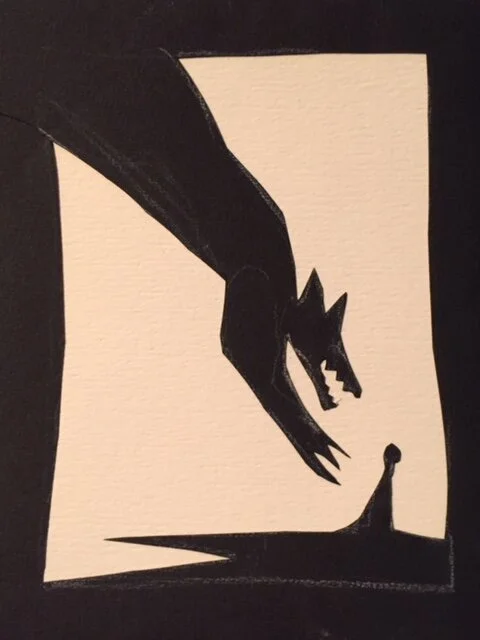Getting Arrested
Papercut
When I was fourteen I got arrested often. The voter registration drives in the South were inspiring people in the North to look at their embedded race problems. I lived on the South Side of Chicago, in integrated Hyde Park, but I went to school in an all black neighborhood close by. I saw how color lines were strictly re-enforced, but no one ever talked about it at home or in school.
August 14th, 1963. I get a call from a friend in C.O.R.E.(Congress of Racial Equality) that something is heating up at 73rd and Lowe. This particular protest was about desperately overcrowded schools in black neighborhoods. Willis Wagons - named after Benjamin Willis, Superintendant of Schools - were metal trailers being installing on vacant lots in black neighborhoods, even though there was plenty of classroom space in white schools nearby. The idea was to contain black neighborhoods and keep Mayor Daley's white voting block happy. We were there to bring attention to what was otherwise invisible in black neighborhoods. (Bernie Sanders got arrested at this site, 73rd & Lowe, that summer. I wonder if he was there on this day.)
My dad drove me and my little brother, Davey, to the site. Davey was twelve and curious about what I was doing. This was his first political event and the only time either of my parents came to see what I was up to at demonstrations. We stood around watching people arrive – student activists, neighborhood organizers, curious bystanders and police. The idea was to sit in front of the earth moving vehicles and stop them. Tension was building and then it broke: Kit, an activist who was being restrained by police, broke free and began running across the dirt. I ran after her and Davey followed. We sat down a few yards in front of a slowly moving bulldozer. More people joined us, linking arms in a line. The bulldozer scoop had huge teeth and stopped just behind our backs. Police moved in. I'd been taught to protect my body by curling in the fetal position if we were separated, or beaten by police batons. Cameras were there so this didn't happen. Instead, we joined arms at the elbows, sang, and tried to hold on tight as the police pulled us apart. When they did, I was dragged across the dirt and thrown into the back of the Paddy Wagon for women.
Davey, being a little kid, was put in the front seat of our wagon - I guess they thought he shouldn't be in the men's wagon. We weren't cuffed, so I walked up to the heavy grate that separated the back of the truck from the front seat. Davey was sitting quietly, watching out the window as police kicked up dust clouds dragging people. As I was talking to him I saw the keys for the Wagon in the ignition. "Grab the keys," I said. "Pass them to me." Davey pulled them out and pushed them through the thick wire. I put them down my shirt. When the policeman who was driving came back, ready to roll, he went through all his pockets and looked around on the ground but couldn't find his keys. We stalled the police for a good hour as they sent to headquarters to get a second set.
This was one of many protests I was in that summer. On a good day we could get arrested in the morning, fill the jails for a few hours (just long enough to have a PB&J sandwich) get bailed out and return to the protest in the afternoon. It was the same as now: a desperate attempt to bring attention to systemic racial discrimination.
A few weeks later, my summer vacation was over and I went back to high school. Hyde Park High School was built for 2,000 white kids; now, after white flight, it had 4,500 students, mostly black. The bathrooms were bombed out so you held your pee all day. Gangs from the neighborhood sometimes came in to continue their fights. If bottles started flying in the lunch room you ducked under tables or went outside. Some of our teachers were openly racist and resented how the school had changed. Some were heroic. Some were just doing a job. Abandoned by the city and tax payer money, this inner-city school had been left to rot. And nothing was ever said about it – not in history class, where we could have studied slavery, lynching, Jim Crow laws, the Great Migration; not in biology where we could have studied the history of science and its built in prejudices; not in language classes which were from other white cultures. But I learned. I saw for myself. Cameras are doing that for everyone now. It was cameras then, and it is cameras now, that show reality to those who don’t want to know.

